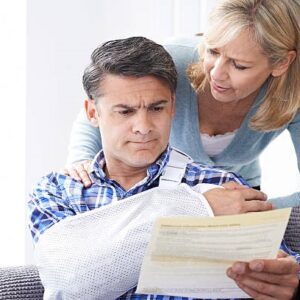Following the biggest California earthquake in nearly a decade, people everywhere are asking how they can protect themselves and their loved ones in the event of another.
In this post we will lists of tips that will help you:
- Before the earthquake
- During the earthquake
- After the earthquake
Before The Earthquake
- Put together an emergency 72-hour kit in case of disaster and store it somewhere easy to find. Make sure everyone who lives in your house knows what is in it and where it’s stored. The kit should contain:
- Enough water for 72 hours for everyone
- Nonperishable food like energy bars and canned supplies
- First aid kit
- Blankets
- Flashlight with extra batteries
- Change of clothes
- Whistle to signal for help
- Dust masks for everyone
- Moist towelettes, garbage bags and plastic ties for personal sanitation
- Portable radio. Windup radios are great because you won’t need batteries.
- Wrench or pliers for turning off utilities
- Can opener
- Local map
- Important documents and photocopies of documents you need to store elsewhere.
- Cash
- Any special needs items like inhalers.
- For insurance purposes it is a good idea to go around your house with a video camera, opening your cupboards and drawers, filming what is inside. This gives you an inventory of what you have that may need replacing.
- Secure heavy items in your house that may fall. Bookshelves, mirrors, and light fixtures can be fastened to the wall. Store heavy items on the bottom of the shelves.
- Create a family emergency communication plan. Decide where you will meet if separated when disaster strikes.
During the Earthquake
- Drop to the ground and take cover under a nearby large heavy object like a table or desk. If there is no tables or desks, crouch by an inside corner of the room and cover your head with your arms.
- Stay away from anything that might fall like a lighting fixture. Stay away from windows, outside doors, and outside walls.
- If you are in bed when the earthquake strikes, stay in bed with your head covered with a pillow. Unless you are under a lighting fixture, in which case move to the nearest safe place.
- Despite popular belief, it is not always best to hide under a doorway. Many inside doorways are lightly constructed and don’t offer that much protection. If you know it’s a load bearing, strong doorway then it will offer protection.
- Do NOT use elevators.
- Stay inside until the shaking stops and it is safe to go outside. Do not exit a building during the shaking. Most injuries occur when trying to move from one location to another.
- Expect fire alarms and sprinklers to go off. Power may go out.
- If you are in a car, stop in a clear area away from buildings, trees, overpasses, underpasses, or utility wires.
After the Earthquake
There are still dangers after the earthquake has stopped. Proceed with caution and follow these steps.
- Expect aftershocks that may follow after the initial earthquake.
- Check yourself for injury and provide assistance to others if you have training.
- If you’re inside a damaged building, go outside and move away from the building.
- If you are trapped, send a text or alert someone to your presence by banging something loud or using a whistle. Do not shout as this could get dust in your mouth.
- Save phone calls for emergencies.
- Wear shoes to avoid stepping on glass
- Monitor local news reports and agencies for emergency information.
Get An Earthquake Insurance Quote
Insurance companies are currently not able to write policies for earthquake insurance because of a moratorium. Click this link to find out what a moratorium is.
Until the moratorium is lifted we can still offer you free quotes. Fill out this form and we will contact you asap for your free quote.
Printable Guide
We’ve made out Earthquake Survival Checklist printable. To access it use the link below.
Download the Earthquake Survival Checklist
Use the tips we’ve outlined for you here and make sure your family knows them too. From everyone at Cullen Insurance, we’d like to wish you a safe week.




